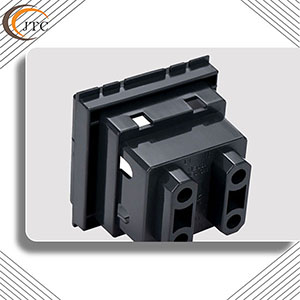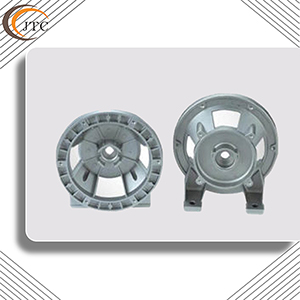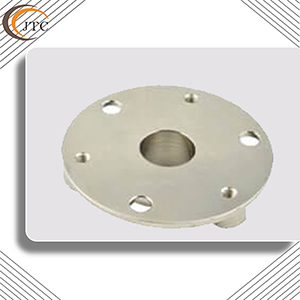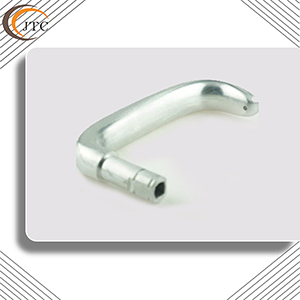-
History&Experience
JTC-machining specializes in die casting aluminum and zinc. With more than 25 years of experience, we have the capacity to supply large series in a fully quality-assured production process.
-
Processing Machine
We deploy highly automated 280T to 1200T aluminum die casting machines to create high-precision, high-quality components at high speed.
-
Production Capacity
6,000,000-10,000,000 per year. Production Capacity is very important while designing a industrial forming. It determines how much production a business anticipates to be sold for next few years or months.
-
Competitive Price
From simple to finished part, prototype or mass production, defect rate under 10%. Our angel servicers are here to offer you the best products at the right price.
-
Raw Material
The aluminum alloy material we use for die casting fully follow the ASTM standards.
-
Quality Control
From factory audits to part inspections, we follow strict processes to ensure your parts always meet the highest quality standards. ASTM standards.
-
Delivery Time-Do As Promised
On time delivery. Lead Time is an important factor for customer satisfaction. Typically, customers want goods or service as fast as possible with minimal effort.
Characteristics and Advantages of Aluminum Die Castings include:
- Lightweight and Durable. Good Strength-to-Weight Ratio
- Great Resistance to Corrosion
- Excellent Electrical Conductivity
- Environmentally friendly. Fully Recyclable and Reusable in Production.
- Efficient and economical alternative to other processes
- The ability to cast thin walls and complex shapes
- High rates of production
Why Aluminum Die Casting?
The most significant advantage of aluminum die casting compared to other processes like machining, or sheet metal forming is that aluminum can create intricate 3D designs very efficiently at a lower cost. Because of this, manufacturers are able to order customized castings that are ideal for their production needs. Aluminum die castings can turn molten metal into a near-net shape part in seconds, so machining or other operations can be eliminated.
The Differences among Aluminum Die Casting Material
A360Aluminum alloy A360 is an American standard aluminum ingot. Aluminum content: 88 (%). A360 is an aluminum alloy with excellent pressure tightness and fluidity. It has a high silicon content and offers good forming performance, corrosion resistance, candle resistance, fatigue strength and medium static strength. It can be used to manufacture automobile oil pans, automobile controller shells, motor shells, 5G communication boxes, LED lamp housing and so on.
ADC12 is a Japanese brand, ADC12 equivalent to America Aluminum alloy code A383; It is often used as an alternative to A380. It has better corrosion resistances, is lightweight, and its benefits include ease of casting, good mechanical properties, and dimensional stability. Suitable for cylinder head cover, sensor, bracket, cylinder block, motor cover/housing, etc.
Get Instant A Quote For Your Die Casting
 |
 |
 |
 |
WHY ZINC DIE CASTING?
-
Zinc Castings vs Plastic Molding
Zinc castings have greater stability, durability, and closer tolerances than plastic moldings.
-
Zinc Castings vs Sand Castings or Permanent Mold Casting
Zinc die casting can produce parts with thinner walls, closer dimensional limits, and smoother surfaces. Production is faster, labor and finishing costs are lower.
-
Zinc Castings vs Stamping
Zinc die casting produces more complex shapes with variations possible in section thickness. A single cast part may replace several stampings, resulting in reduced assembly time.
-
Zinc Casting vs Forging
Zinc die castings produce more complex shapes with closer tolerances, thinner walls, and lower finishing costs. Cast core holes are not available with forging.
-
Zinc Castings vs Screw Machine Products
Zinc die casting produces features that are difficult or impossible from bar or tubular stock, while maintaining tolerances without tooling adjustments, with fewer operations, and less scrap.
ADDITIONAL BENEFITS OF ZINC DIE CASTING:
-
Broad Market Appeal
Zinc die casting is ideal for products ranging from toys to electronics. components can be as simple as a sink faucet or as complex as a connector housing.
-
Cost Savings
The advantages of zinc die casting are endless, as it is an efficient, economical process offering a broader range of shapes and components than any other manufacturing technique. Zinc die castings can provide integral fastening elements, such as bosses and studs. Holes can be cored and made to tap, threads can be cast both internally and externally, and parts can be cast with thin walls or other defining features.
-
Precision
Zinc die casting produces multi-cavity, complex shapes within closer tolerances than many other production processes. In addition to producing high volume runs of virtually identical parts, it produces rugged heat and wear resistant parts that are dimensionally stable, while maintaining exceptionally close tolerances.
-
EMI/RFI Shielding
The zinc die casting process produces parts with excellent EMI/RFI shielding characteristics, allowing the cast to act as an electrical ground for internal circuits. Zinc die castings are stronger than plastic parts with similar dimensions. Plus, because they do not consist of separate parts welded or fastened together, the strength is that of the alloy rather than the joining process.
-
Outstanding Finish
Zinc die cast parts can be manufactured with smooth or textured surfaces, and are easily plated or finished with minimal surface preparation.
-
Longer Tool Life
Thousands and in some cases millions of components of identical zinc die castings can be produced before new tooling is required.
THE DIFFERENCES AMONG ZINC MATERIAL
-
ZAMAK 3
Zamak 3 is the de facto standard for the zamak series of zinc alloys; all other zinc alloys are compared to this. Zamak 3 has the base composition for the zamak alloys (96% zinc, 4% aluminium). It has excellent castability and long term dimensional stability.Zamak 3 also offers excellent finishing characteristics for plating, painting and chromate treatments. It is the “standard” by which other zinc alloys are rated in terms of die casting
- • Excellent balance of desirable physical and mechanical properties
- • Superb castability and long-term dimensional stability
- • Excellent finishing characteristics for plating, painting, and chromate treatments
- • Excellent damping capacity and vibration attenuation in comparison to aluminum die cast alloys
-
ZAMAK 5
ZL0410 has the same composition as zamak 3 with the addition of 1% copper in order to increase strength (by approximately 10%), hardness and corrosive resistance, but reduces ductility. It also has less dimensional accuracy Zamak 5 is more commonly used in Europe.Coating capability is good. It has few errors of dimension. It is especially used in accessories and automobile industry.
- • Zamak 5 is more readily plated, finished, and machined than Alloy 3
- • When a measure of tensile performance is needed, ZL-5 castings are recommended.
- • It has a higher copper content than Zamak 3, which results in higher strength
- • It has less ductility (increased elongation) than Zamak 3
- • Manufacturer must keep in mind that this reduction in ductility can affect formability during secondary operations such as bending, riveting, swaging, and crimping operations

